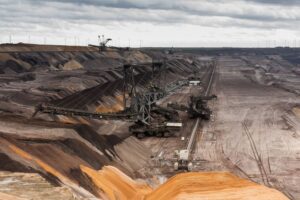Here are 6 stocks that got promoted in the ASX quarterly rebalance, and 6 that got demoted
![]() Nick Sundich, September 12, 2025
Nick Sundich, September 12, 2025
On Monday September 22, the ASX quarterly rebalance will be effective. Stocks will be promoted into new indices, while others will be demoted. This will trigger mandatory institutional buying and selling of such companies, something that can cause an impact on the share price. They also garner attention from investors who may buy the stock in the future.
You can find a full list right here and its a doozy with 9 stocks alone entering the ASX 200 and 9 stocks exiting – more than double this time last year. This doesn’t even account for promotions and demotions to other indices like the All Ords or All Tech Index. While we can’t recap all stocks being promoted and relegated in the ASX quarterly rebalance, we thought we’d highlight a handful of the most noteable stocks on the list.
What are the Best ASX Stocks to invest in right now?
Check our ASX stock buy/sell tips
6 stocks that got promoted in the ASX quarterly rebalance
TechnologyOne (ASX:TNE) into the ASX 50
TechnologyOne is a tech stock specialising in Enterprise resource planning (ERP) software with a focus on the education and government. Its products perform several tasks for customers including reducing costs, improving efficiency and streamlining processes.
TNE purports to have broken its profit and revenue record 16 years running, doing so while undergoing a 100% transition to to a SaaS model. Yet the company claims it is not done yet, targeting expansion overseas into the UK. Never mind its high multiples, or the fact that its next annual results are just two months away, the company got promoted yet again in the latest ASX quarterly rebalance.
Ramelius (ASX:RMS) into the ASX 100
This company’s promotion was a question of when, not if. But while some gold companies have only grown their share price just because of the gold price run, other gold companies have grown because of a stellar mining performance, and Ramelius is one of them.
Ramelius is still led by founder Mark Zeptner, it boasts Total Mineral Resources of 180Mt at 1.5g/t for 8.7Moz of gold, and Ore Reserves of 20Mt at 1.6g/t got 1.1Moz of gold and aspires to be a 500koz/pa producer by FY30 (5 years from now). This is planned to be underpinned by an expansion from its flagship Mt Magnet project which will make up 350koz of this, as well as its $2.4bn purchase of Spartan Resources.
DroneShield (ASX:DRO) into the ASX 200
Droneshield specialises in counter drones (C-UAS) and electronic warfare solutions. DRO’s core mission is to detect, track, identify and defeat hostile drones and unmanned threats across military, government, and commercial sectors. There is a strong thematic behind this one with growing spending on defence, but DRO is no penny stock just riding off the wave of shareholder enthusiasm for the sector.
The company is an established player in the market. It reported its strongest quarter on record in Q2 2025, generating $38.8 million in revenue, a 480% increase year-over-year. With $176 million in revenue already booked or contracted for the year, DRO is pacing well ahead of its 2025 full-year result. Its addition into the ASX 200 in the quarterly rebalance will mean certain institutions will either finally be able to buy the stock and/or will have to (for instance, if they run ETFs that track the ASX 200).
IperionX (ASX:IPX) into the ASX 200
IperionX specialises in a technology that produces titanium metal. Titanium is important because it combines exceptional strength, corrosion resistance, and light weight — making it critical in a wide range of industries including aerospace, defence and automotive uses. it has high corrison resistance, has no toxicity and is non-reactive in the human body. Given all of the above, it is a critical metal in the US.
However, it is mostly imported, but IPX is a company with a novel technology that will help onshore America’s supply chain. Titanium has the Titan Project, one of the richest titanium projects on the planet from where it will derive the oxide from. From there, IPX will make titanium metal from HSPT – a thermo-mechanical process that enhances the microstructure of titanium parts that improves strength, ductility, and fatigue resistance through hydrogen-assisted sintering and controlled phase transformation.
Virgin Australia (ASX:VGN) into the ASX 300
Virgin relisted on the ASX earlier this year a very different company to the one that went into administration and was bought by Bain Capital during the pandemic. It is a mostly domestic airline with a simpler fleet, simpler ownership structure, a lower debt burden (with net debt to EBITDA just 1.1x) and it is profitable. In FY25, it made a $479m statutory profit and a $331m underlying profit, with the former figure up 28%. Its revenue was $4.8bn, up 8.5%.
For FY26, the company told investors it could be impacted by flow-on effects of tariffs on macroeconomic conditions and fuel prices. However, it expected demand for air travel to grow with GDP growth and that it grow domestic capacity by mid-single digits in the first half of the year.
Motorcycle Holdings (ASX:MTO) – into ASX 300
MTO has 55 retail and wholesale outlets selling motorcycles and motorcycle parts – a portfolio headed by Peter Stevens and Harley-Heaven which it bought in the last financial year. Since bottoming out at $1 a share in mid-2024, the company has turned itself around and sits at over $3.50 a share, thanks to a spectacular FY25.
The company recorded $650m revenue (up 12%), $51m EBITDA (up 13%) and a $18m profit (up 28%). In absence of specific guidance for FY26, the company told investors it would strive to increase sales (especially digital sales) and emphasise cost management efficiency through structured expense reductions.
6 companies that got demoted in the ASX quarterly rebalance
Lifestyle Communities (ASX:LIC) from the ASX 200
Lifestyle Communities should be going well right now as the Baby Boomers retire. LIC has land with prefabricated homes (like caravan parks) and has a business model of leasing the land to retiree Boomers. For customers, this model has been appealing because they’d pay less upfront, freeing up cash for their lifestyles and potentially leaving some of the bill for their estate beneficiaries.
Unfortunately, a VCAT decision killed investor enthusiasm for the company. One of the key revenue streams for LIC was the collection of “exit fees” when residents decided to leave. But VCAT found they were void due to inadequate disclosure and lack of certainty. The company was not transparent enough with its residents regarding how and when these fees would be charged, leaving the court to determine that the fees were not legally enforceable
Nuix (ASX:NXL) from the ASX 200
Nuix should be one of the best performing stocks, given the AI and machine learning boom. It developed an algorithm that enables unstructured data to be made searchable and provides the structure for more elaborate analysis.
The post-IPO controversies are well known and not worth going into again, but after a period where things seemed to be going better, FY25 was a crash back to reality. The company swung from a $5m profit to a $9.2m loss due to legal costs. Specifically defending itself against investors who claimed they were misled about the company’s true financial position when it listed. Geopolitical conditions didn’t help either, causing sales to slow down (not just reaching new leads but ‘closing’ deals thought to be all but done).
OFX (ASX:OFX) from the ASX 300
OFX specialises in international money transfers. After a few good years, the company saw investors flee en-masse after it formally walked away from long-term growth targets and its financial position deteriorated. OFX reckons it can turn itself around given its recently launched platforms. But future optimism was not enough to spare it being demoted in the ASX quarterly rebalance.
Monash IVF (ASX:MVF) from the ASX 300
Monash IVF provides IVF services. Even though there is demand for IVF services and margins are high, the company has had a shocking run of late given two bad mistakes – one was when one customer was accidentally impregnated with someone else’s embryo and the other was where a patient’s own embryo was incorrectly transferred to that patient. Clearly a big reputational hit that’ll take a while to over come.
Kogan (ASX:KGN) from ASX 300
Kogan is an eCommerce retailer, founded in 2006 by Ruslan Kogan. Its share price is down by more than a third in 2025 due to a number of reasons including its bottom line sinking back into the red – to -$39.5m; an underperformance of New Zealand subsidiary Mighty Ape following a troubled website platform upgrade, margin pressure from elevated costs and, of course, competition from Amazon, eBay, Temu and others.
Avita Medical (ASX:AVH) from the All Ords
Avita’s core technology has been Recell, a ‘spray-on’ product to address skin damage such as from burns. There was hope 2025 would be a good year as the FDA approved 2 new products that would substantially expand its customer base…at least in theory. But the company’s results have kept disappointing investors.
In January, it lowered its guidance for CY25 from $68-70m to $64m. In Q1, it made $18.5m revenue vs $20.75m consensus and its net loss per share missed forecasts too. In Q2 2025, it made $18.4m revenue – short of the $22.5m consensus – and its bottom line disappointed too. The company cited reimbursement delays, particularly unpaid claims related to Recell and coding/pricing complications with Medicare. So after periods of promotions in each ASX quarterly rebalance, now it is suffering a demotion.
Blog Categories
Get Our Top 5 ASX Stocks for FY26
Recent Posts
Webjet Sinks 22 Percent After Softer H1 Results and Weak Domestic Demand
Webjet Falls 22 Percent After H1 Revenue Dips and Domestic Flight Demand Softens Webjet (ASX: WJL) opened down 22 percent…
Javelin Minerals Jumps 2,900 Percent on Capital Consolidation
A Sharper Share Register Sets Javelin Minerals Up for Its Next Corporate Stage Javelin Minerals (ASX: JAV) surged an extraordinary…
Why Are Droneshield Shares Dropping and Should You Be Worried
DroneShield Selloff Tests Nerves, But Fundamentals Tell a Different Story DroneShield (ASX: DRO) experienced a sharp selloff this morning that…



